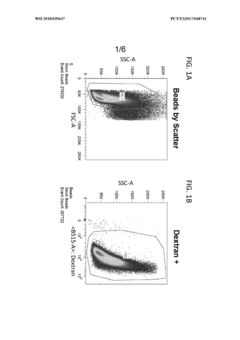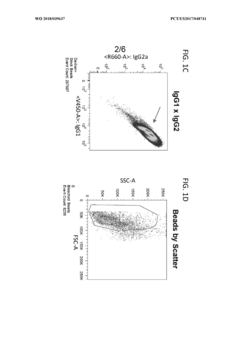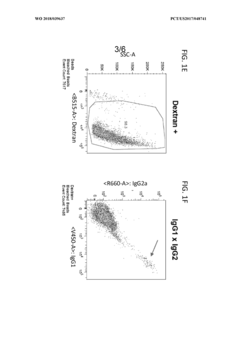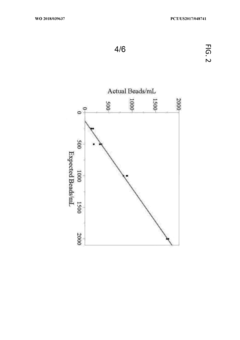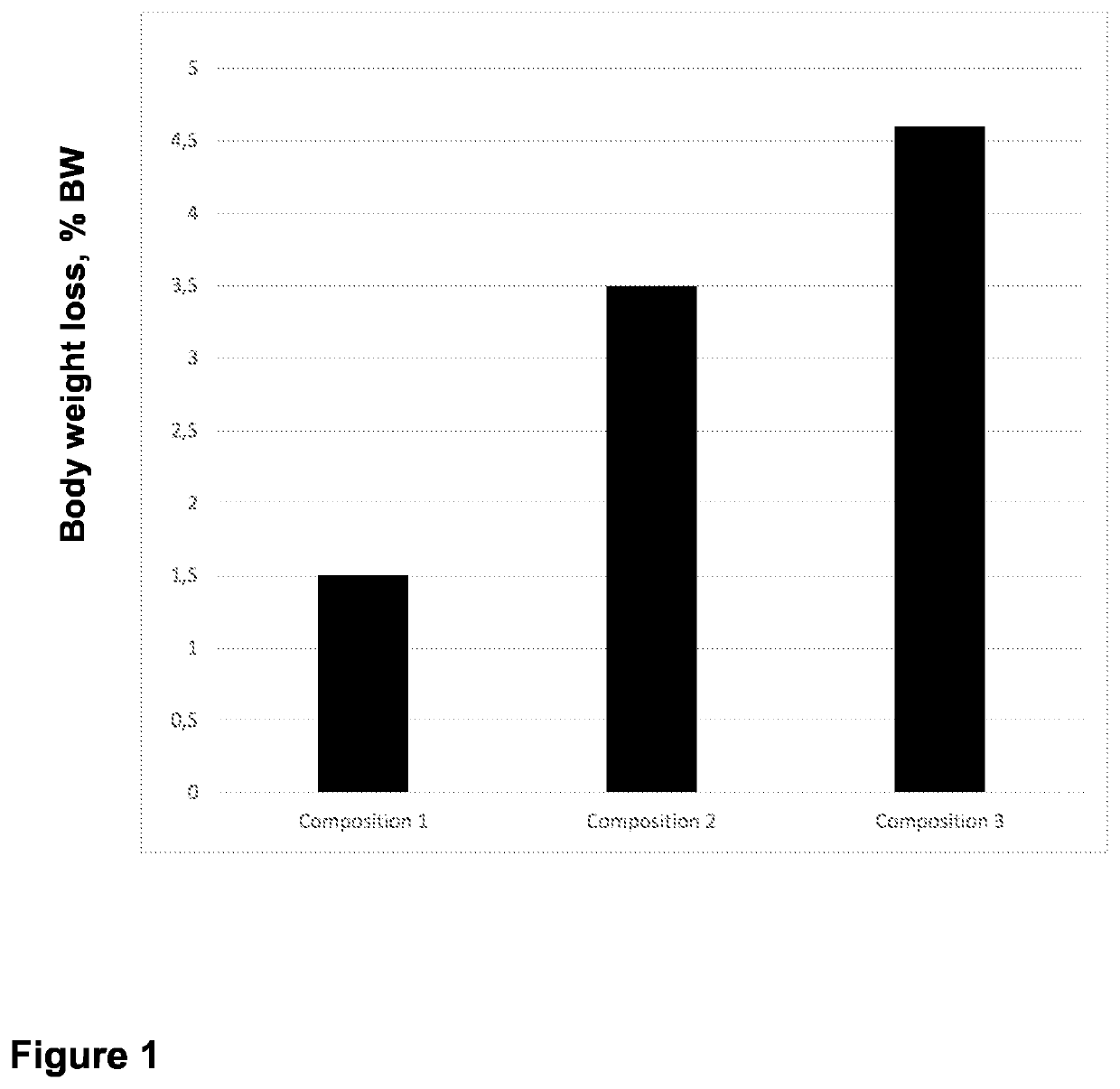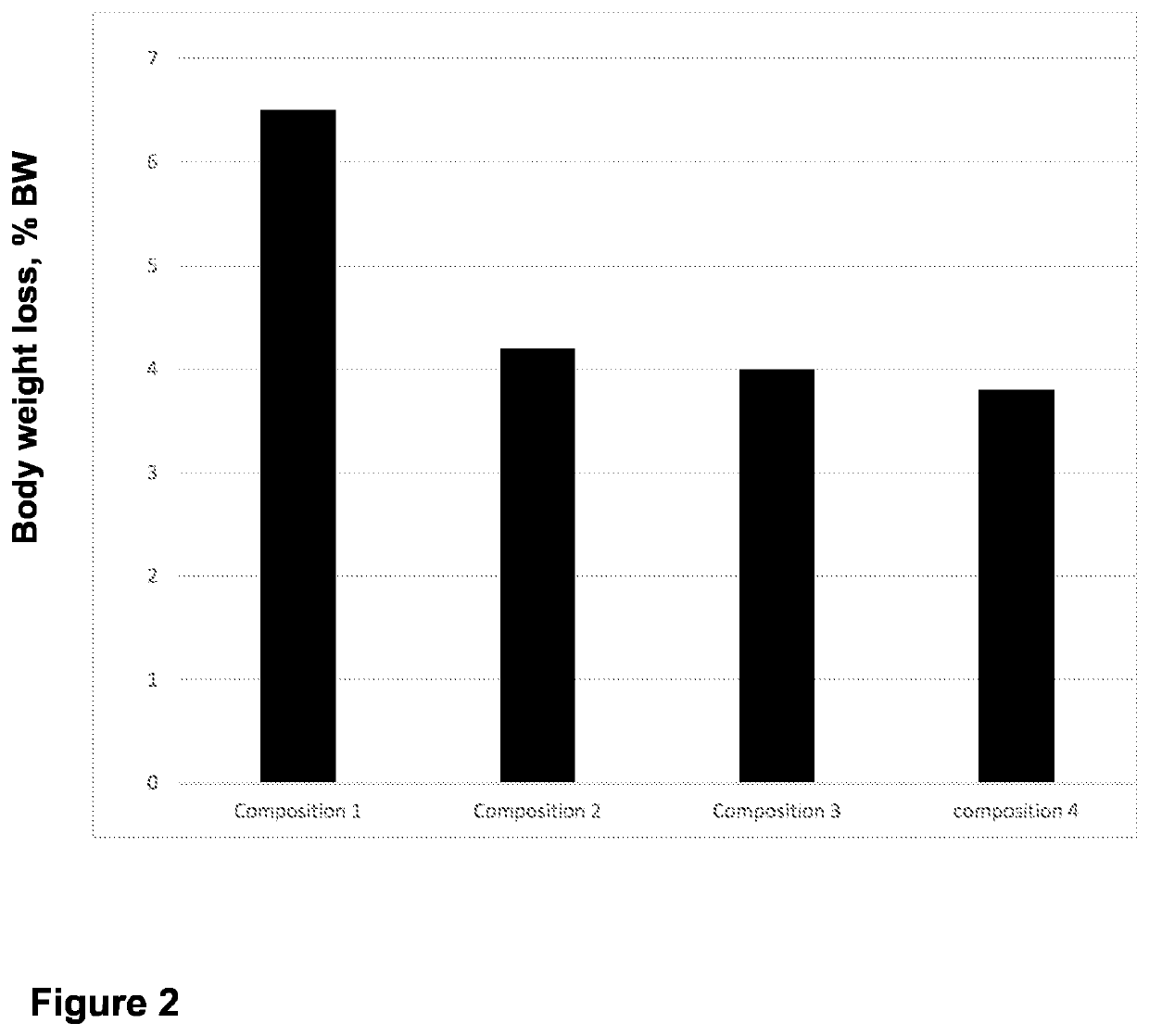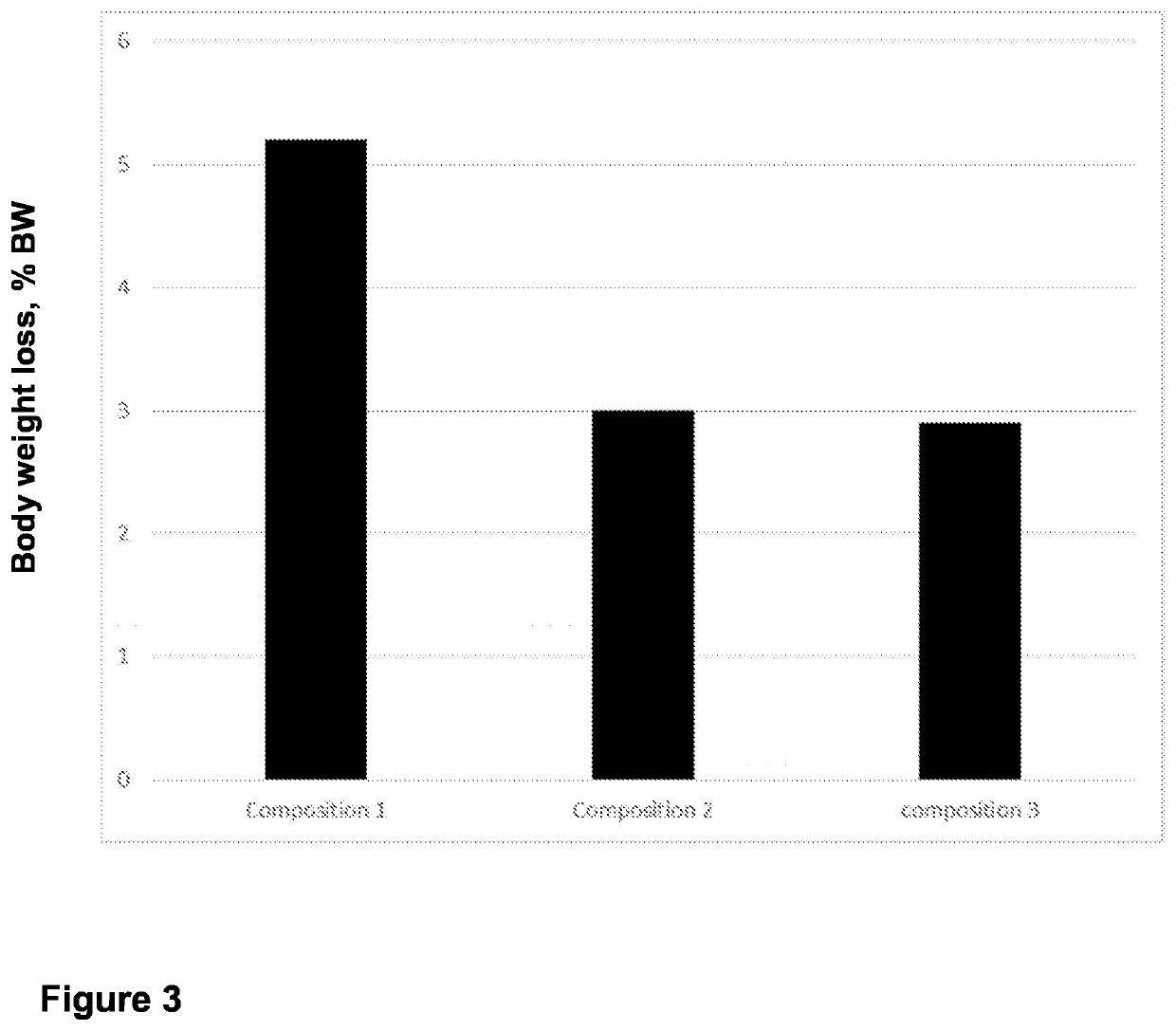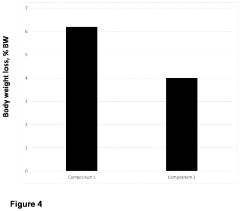What Is Hypertonic Solution?
Hypertonic Solution Fundamentals and Applications
Hypertonic solutions are fundamental to various biological and medical applications, playing a crucial role in osmotic processes. These solutions contain a higher concentration of solutes compared to the surrounding environment, creating an osmotic gradient that drives water movement across semipermeable membranes.
The concept of hypertonicity is based on the principles of osmosis, where water molecules move from areas of lower solute concentration to areas of higher solute concentration. This movement continues until equilibrium is reached or until external forces prevent further water transfer. In hypertonic solutions, the solute concentration is higher than that of the cell's cytoplasm, causing water to flow out of the cell.
Understanding the properties and behavior of hypertonic solutions is essential in various fields, including medicine, biology, and food science. In medical settings, hypertonic solutions are used for therapeutic purposes, such as treating edema or reducing intracranial pressure. These solutions can effectively draw excess fluid from tissues or organs, helping to alleviate swelling and pressure-related complications.
In cellular biology, hypertonic environments can induce plasmolysis in plant cells, where the cell membrane detaches from the cell wall due to water loss. This phenomenon is reversible and serves as a valuable tool for studying cell membrane properties and osmotic regulation mechanisms in plants. Similarly, in animal cells, exposure to hypertonic solutions can lead to cell shrinkage and potential damage if the osmotic stress is prolonged or severe.
The applications of hypertonic solutions extend beyond medical and biological contexts. In food preservation, hypertonic environments created by high salt or sugar concentrations can inhibit microbial growth, extending the shelf life of various products. This principle is the basis for traditional preservation methods like salting and sugar curing.
Hypertonic solutions also find use in industrial processes, such as desalination of seawater through reverse osmosis. By applying pressure to overcome the osmotic gradient, pure water can be separated from saltwater, providing a valuable source of freshwater in water-scarce regions.
The study of hypertonic solutions and their effects on biological systems continues to advance our understanding of cellular processes, osmotic regulation, and potential therapeutic interventions. As research progresses, new applications and insights into the behavior of hypertonic solutions are likely to emerge, further expanding their significance in scientific and practical domains.
Market Analysis for Hypertonic Solutions
The global market for hypertonic solutions has been experiencing significant growth in recent years, driven by increasing applications in healthcare, pharmaceuticals, and biotechnology. Hypertonic solutions, characterized by their higher solute concentration compared to the surrounding environment, play a crucial role in various medical treatments and research applications.
In the healthcare sector, hypertonic solutions are widely used for treating conditions such as edema, intracranial pressure, and hyponatremia. The rising prevalence of these conditions, coupled with an aging population, has been a key factor in market expansion. Additionally, the growing adoption of hypertonic saline solutions in emergency medicine for fluid resuscitation has further boosted market demand.
The pharmaceutical industry has also been a major contributor to market growth, with hypertonic solutions finding applications in drug formulation and delivery systems. The increasing focus on developing novel drug delivery methods has led to a surge in research and development activities involving hypertonic solutions, particularly in areas such as osmotic drug delivery systems.
In the biotechnology sector, hypertonic solutions are extensively used in cell culture techniques and cryopreservation. The rapid growth of the biotechnology industry, driven by advancements in genomics and personalized medicine, has created a substantial demand for high-quality hypertonic solutions in research laboratories and biopharmaceutical manufacturing facilities.
Geographically, North America and Europe have been the dominant markets for hypertonic solutions, owing to their advanced healthcare infrastructure and high healthcare expenditure. However, the Asia-Pacific region is emerging as a lucrative market, with countries like China and India witnessing rapid growth in healthcare and biotechnology sectors.
The market landscape is characterized by the presence of both established pharmaceutical companies and specialized manufacturers. Key players have been focusing on product innovation and strategic collaborations to maintain their competitive edge. The development of novel formulations, such as balanced hypertonic solutions and those with specific therapeutic properties, has been a notable trend in the market.
Looking ahead, the market for hypertonic solutions is expected to continue its growth trajectory. Factors such as the increasing prevalence of chronic diseases, advancements in drug delivery technologies, and the expanding applications in regenerative medicine are likely to drive market expansion. However, challenges such as stringent regulatory requirements and the need for specialized manufacturing processes may impact market dynamics.
Current Challenges in Hypertonic Solution Development
The development of hypertonic solutions faces several significant challenges that hinder their widespread adoption and efficacy in various applications. One of the primary obstacles is maintaining the stability of these solutions over extended periods. Hypertonic solutions are prone to precipitation and crystallization, particularly when exposed to temperature fluctuations or prolonged storage. This instability can lead to reduced effectiveness and potential safety concerns in medical applications.
Another critical challenge lies in the precise control of osmolarity and tonicity. Achieving and maintaining the exact concentration of solutes required for specific applications can be technically demanding. Even slight deviations from the intended osmolarity can result in unintended physiological effects, especially in medical treatments where precision is paramount.
The biocompatibility of hypertonic solutions presents an ongoing challenge, particularly in medical applications. While these solutions are designed to draw fluid from tissues or cells, they can also cause cellular damage or irritation if not carefully formulated. Balancing the osmotic effects with minimal adverse reactions remains a complex task for researchers and formulators.
In industrial applications, the corrosive nature of some hypertonic solutions poses significant challenges. High salt concentrations can accelerate wear on equipment and infrastructure, necessitating frequent maintenance and replacement. This issue is particularly pronounced in desalination plants and certain manufacturing processes where hypertonic solutions are integral to operations.
The environmental impact of hypertonic solutions is an emerging concern, especially in large-scale applications. The disposal of these solutions can affect local ecosystems, altering soil and water chemistry. Developing environmentally friendly formulations and sustainable disposal methods is becoming increasingly important as regulations tighten.
Cost-effectiveness remains a persistent challenge in the production and application of hypertonic solutions. The need for high-purity ingredients and specialized manufacturing processes can drive up costs, limiting their use in certain sectors. Balancing efficacy with economic viability is crucial for wider adoption, particularly in resource-constrained settings.
Lastly, the regulatory landscape surrounding hypertonic solutions, especially in medical applications, presents ongoing challenges. Navigating complex approval processes and meeting stringent safety standards can be time-consuming and costly. This regulatory burden can slow innovation and delay the introduction of new, potentially beneficial hypertonic solutions to the market.
Existing Hypertonic Solution Formulations
01 Hypertonic solutions for medical treatments
Hypertonic solutions are used in various medical treatments, including wound care, osmotherapy for reducing intracranial pressure, and as a component in intravenous fluids. These solutions have a higher solute concentration than body fluids, which can help draw excess fluid from tissues and promote healing.- Hypertonic solutions for medical treatments: Hypertonic solutions are used in various medical treatments, including wound care, osmotherapy for reducing intracranial pressure, and as a component in dialysis fluids. These solutions have a higher solute concentration than body fluids, which can help draw excess fluid from tissues or create specific therapeutic effects.
- Hypertonic solutions in cell culture and preservation: Hypertonic solutions play a crucial role in cell culture techniques and preservation of biological samples. They are used to create osmotic stress in cells, study cellular responses, and maintain the viability of cells during cryopreservation processes.
- Hypertonic solutions for diagnostic purposes: Hypertonic solutions are utilized in various diagnostic procedures, such as in contrast agents for imaging studies or in tests to evaluate kidney function. These solutions can enhance the visibility of specific structures or assess the body's response to osmotic changes.
- Formulation and preparation of hypertonic solutions: The development of hypertonic solutions involves careful formulation to achieve the desired osmolarity and therapeutic effects. This includes selecting appropriate solutes, determining optimal concentrations, and ensuring stability and safety of the final product.
- Applications of hypertonic solutions in agriculture and food industry: Hypertonic solutions find applications beyond medicine, including use in agriculture for seed priming and in the food industry for food preservation and processing. These solutions can influence plant growth, extend shelf life of products, or modify food textures.
02 Hypertonic solutions in cell culture and preservation
Hypertonic solutions play a crucial role in cell culture techniques and preservation of biological samples. They are used to create osmotic stress in cells, study cellular responses, and maintain cell viability during cryopreservation processes.Expand Specific Solutions03 Hypertonic solutions for nasal and respiratory therapies
Hypertonic saline solutions are employed in nasal and respiratory therapies to treat conditions such as sinusitis, bronchiolitis, and cystic fibrosis. These solutions help improve mucociliary clearance and reduce inflammation in the airways.Expand Specific Solutions04 Hypertonic solutions in food processing and preservation
In the food industry, hypertonic solutions are utilized for dehydration, preservation, and flavor enhancement of various food products. This technique helps extend shelf life and maintain food quality by reducing water activity in the processed foods.Expand Specific Solutions05 Hypertonic solutions for environmental and industrial applications
Hypertonic solutions find applications in environmental remediation, wastewater treatment, and industrial processes. They are used for desalination, soil remediation, and as draw solutions in forward osmosis systems for water purification and concentration of valuable compounds.Expand Specific Solutions
Key Players in Hypertonic Solution Industry
The hypertonic solution market is in a growth phase, driven by increasing applications in medical treatments and research. The global market size is expanding, with projections indicating significant growth in the coming years. Technologically, hypertonic solutions are well-established, but ongoing research by companies like Medtronic, Inc., Gambro Lundia AB, and Fresenius Medical Care Deutschland GmbH is advancing their efficacy and applications. Universities such as the University of Liege and University of Copenhagen are contributing to fundamental research, while pharmaceutical companies like AstraZeneca AB and Pfizer Products, Inc. are developing new formulations. The competitive landscape is diverse, with both established medical device manufacturers and innovative biotech firms like Juno Therapeutics, Inc. vying for market share.
Medtronic, Inc.
Gambro Lundia AB
Innovative Approaches in Hypertonic Solution Research
- The method involves osmotic cell lysis using a hypotonic solution followed by optional hypertonic solution incubation to remove cell debris, preserving particle integrity and allowing for accurate enumeration through techniques like flow cytometry or microscopy.
- Aqueous compositions with a potassium to sodium ratio ranging from 65:35 to 95:05, which are hypotonic or isotonic, containing additional electrolytes like magnesium, gluconeogenic precursors like glycerol, and alkalinizing agents, administered to livestock animals during feed deprivation to maintain osmotic balance and provide energy.
Regulatory Framework for Hypertonic Solutions
The regulatory framework for hypertonic solutions is a complex and multifaceted system designed to ensure the safety, efficacy, and quality of these medical products. In the United States, the Food and Drug Administration (FDA) plays a pivotal role in overseeing the development, manufacturing, and distribution of hypertonic solutions. These solutions are typically classified as drugs or medical devices, depending on their intended use and mechanism of action.
The FDA's Center for Drug Evaluation and Research (CDER) is responsible for evaluating and approving hypertonic solutions used as medications. This process involves rigorous clinical trials to demonstrate safety and efficacy, as well as thorough reviews of manufacturing processes and quality control measures. The agency also enforces Good Manufacturing Practices (GMP) to ensure consistent product quality and safety.
For hypertonic solutions used in medical devices, such as those employed in dialysis or wound care, the FDA's Center for Devices and Radiological Health (CDRH) oversees the regulatory process. This includes premarket approval (PMA) or 510(k) clearance, depending on the device classification and intended use.
Internationally, regulatory bodies such as the European Medicines Agency (EMA) and the World Health Organization (WHO) provide guidelines and standards for hypertonic solutions. The EMA's Committee for Medicinal Products for Human Use (CHMP) evaluates marketing authorization applications for these products within the European Union. The WHO, on the other hand, offers global guidance on the quality, safety, and efficacy of hypertonic solutions, particularly in the context of essential medicines.
Regulatory requirements for hypertonic solutions often include specific labeling guidelines, storage and handling instructions, and post-market surveillance protocols. Manufacturers must adhere to pharmacopeial standards, such as those set by the United States Pharmacopeia (USP) or the European Pharmacopoeia (Ph. Eur.), which define quality specifications for ingredients and finished products.
In recent years, there has been an increased focus on harmonizing regulatory approaches across different regions through initiatives like the International Council for Harmonisation of Technical Requirements for Pharmaceuticals for Human Use (ICH). This effort aims to streamline the development and approval processes for hypertonic solutions and other medical products globally, while maintaining high standards of safety and efficacy.
As the medical field continues to advance, regulatory frameworks for hypertonic solutions are evolving to address new challenges and opportunities. This includes adapting to novel delivery systems, addressing potential environmental impacts, and incorporating emerging technologies in manufacturing and quality control processes.
Safety and Efficacy Considerations
When considering the safety and efficacy of hypertonic solutions, several key factors must be taken into account. The osmotic pressure exerted by these solutions can have significant physiological effects on cells and tissues, which necessitates careful administration and monitoring.
One primary safety concern is the potential for rapid fluid shifts within the body. Hypertonic solutions can draw water out of cells, leading to cellular dehydration and shrinkage. This effect can be particularly pronounced in sensitive tissues such as the brain, where rapid changes in cell volume may result in neurological complications. Healthcare providers must be vigilant in monitoring patients for signs of electrolyte imbalances, which can occur as a result of the fluid shifts induced by hypertonic solutions.
The efficacy of hypertonic solutions is closely tied to their ability to create an osmotic gradient. This property makes them valuable in treating conditions such as cerebral edema, where reducing intracranial pressure is crucial. However, the effectiveness of these solutions can vary depending on factors such as the specific solute used, concentration, and rate of administration. Careful dosing is essential to achieve the desired therapeutic effect while minimizing potential adverse reactions.
Another important consideration is the impact of hypertonic solutions on blood viscosity and circulation. While these solutions can effectively expand plasma volume, they may also increase blood viscosity, potentially affecting microcirculation and tissue perfusion. This effect must be carefully balanced, especially in patients with pre-existing cardiovascular conditions or those at risk of thrombosis.
The choice of solute in hypertonic solutions also plays a critical role in both safety and efficacy. Common solutes include sodium chloride, mannitol, and hypertonic saline. Each has its own profile of benefits and potential side effects. For instance, hypertonic saline may be more effective in certain scenarios but carries a higher risk of hypernatremia compared to mannitol.
Long-term use of hypertonic solutions requires careful consideration of potential cumulative effects. Repeated administration may lead to adaptations in cellular osmoregulation, potentially altering the effectiveness of subsequent treatments. Additionally, chronic exposure to high osmolarity environments may have implications for cellular function and tissue integrity over time.
In clinical practice, the use of hypertonic solutions often involves a delicate balance between achieving therapeutic goals and managing potential risks. Continuous monitoring of vital signs, electrolyte levels, and fluid balance is crucial. Healthcare providers must be prepared to adjust treatment protocols based on individual patient responses and to intervene promptly if adverse effects are observed.
